Spinal stenosis and neurogenic claudication
What is Spinal Stenosis?
Spinal stenosis (or narrowing) is a common condition that occurs when the small spinal canal that contains the nerve roots and spinal cord becomes restricted. This narrowing can squeeze the nerves and the spinal cord causing lower back and leg pain. In general, spinal narrowing is caused by osteoarthritis, or ‘wear and tear’ arthritis, of the spinal column. This results in a ‘pinching’ of the spinal cord and (or) nerve roots. The picture opposite shows how spinal stenosis compresses the spinal nerves.
What is neurogenic claudication?
Neurogenic claudication is a term used to describe the leg pain and symptoms during walking which are associated with the condition of lumbar spinal stenosis. People suffering from neurogenic claudication have trouble walking any significant distance, and frequently must sit down or lean over forward to relieve symptoms. While there are no cures, there are many therapies available.
Why does it happen?
In a small number of cases a person may be born with a small spinal canal (congenital stenosis). However, the most common cause is due to progressive degenerative changes in the spine. This ‘acquired spinal stenosis’ can occur from the narrowing of the space around the spinal cord due to bony overgrowth from osteoarthritis combined with thickening of one of the ligaments in the back, and a bulge of the intervertebral discs.
What are the symptoms?
The main symptoms reported are lower back pain, leg and calf pains. These are commonly aggravated with standing or walking and are usually relieved quickly by sitting down or leaning over. Although symptoms may arise from narrowing of the spinal canal, not all patients with narrowing develop symptoms of neurogenic claudication. Why some patients develop symptoms and others do not remains unknown.
How is the condition treated?
Although there is no cure for spinal stenosis, various therapies are available, one of the most important being exercise. Keeping the hip and leg muscles from getting weaker helps increase stability and the ability to walk. Postural correction during standing and walking can also aid in pain relief. Medication may be helpful for pain relief. Spinal injections or surgery may be used as a last resort as outcomes are often no better than self management using exercise and medication.
How can I manage my symptoms?
- Exercise regularly. Flexion based exercises (bending forwards) often reduces pain symptoms.
- Continue general cardiovascular activity such as swimming or the use of an exercise bike if they do not aggravate symptoms.
- Modify activity. Avoid activities that can cause or worsen the pain and disability.
- Talk to your GP about pain medications, and other methods recommended for pain reduction.
If you have weakness in your leg muscles, reduced feeling in your legs or you generally feel unwell please see your GP immediately. Please note that constipation is common with pain medication and if you have a problem with this please see your GP. If you are unable to pass urine, are incontinent or lose feeling in the genital area please go to A&E immediately.
Rehabilitation exercises for spinal stenosis and neurogenic claudication
Flexion in lying
Flexion in lying
- Lying on your back, pull both knees up towards chest.
- Hold for 10 seconds.
- Repeat 10 times.
- Perform exercise 3 times a day.
Pelvic tilt
Pelvic tilt
- In sitting, tilt your pelvis forward which will increase the arch in the small of your back.
- Then tilt your pelvis backwards as if tucking your tail bone under.
- Try to keep your shoulders in the same position throughout.
- Repeat this 10 times for 3 sets, 3 times a day.
Quadriceps stretch in side-lying
Quadriceps stretch in side-lying
- Lie on your left or right side with a towel round your left or right foot and your hips slightly bent forward.
- Gently extend your hip whilst pulling your foot up towards your bottom.
- When you feel the stretch hold for 30 seconds and repeat 5 times.
- Perform exercise twice a day.
If you experience an increase in your pain that does not settle, or any other adverse symptoms, please contact your GP or physiotherapist before continuing with the exercises.


